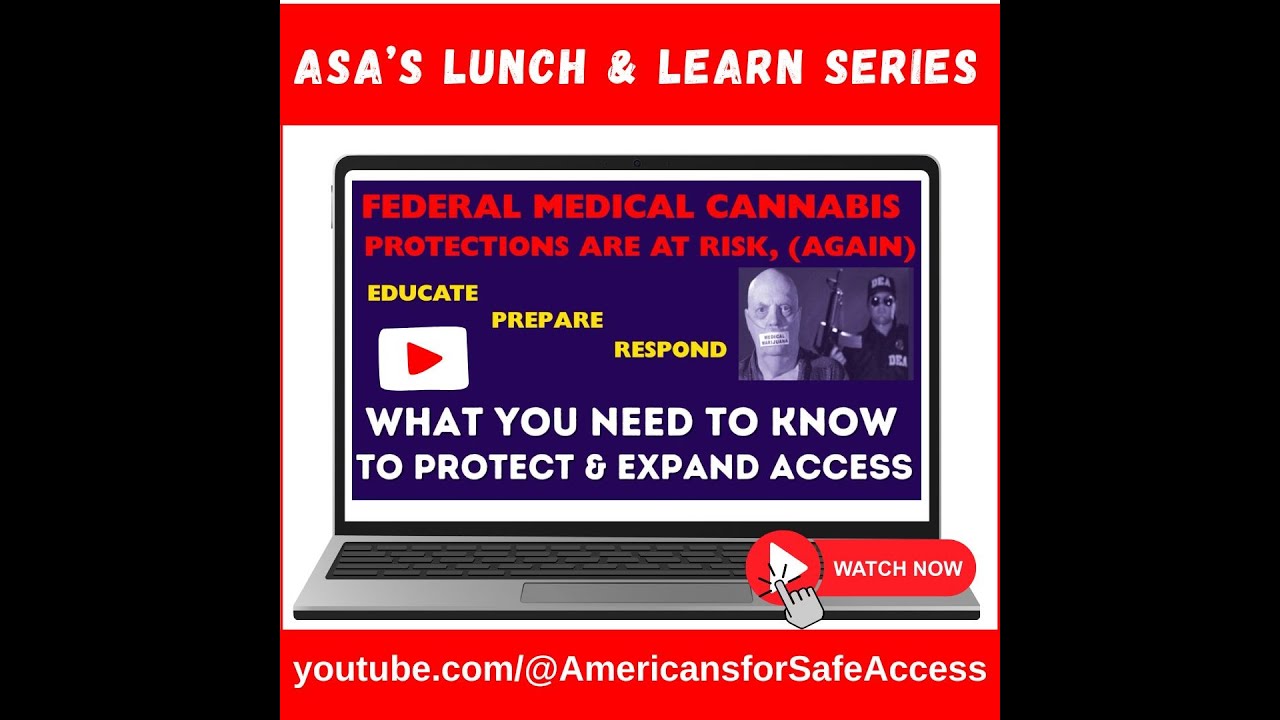It’s Time For Congress To Create A Federal Pathway For Medical Cannabis Access (Op-Ed)
July 1, 2025
“Congressional attention has drifted toward adult-use legalization and the chaotic hemp-derived cannabinoid market, leaving medical cannabis patients behind.”
By Steph Sherer, Americans for Safe Access
After a decade-long “ceasefire” secured through annual appropriations legislation, millions of patients and stakeholders in state medical cannabis programs now face renewed threats. President Donald Trump’s FY 2026 budget proposal reveals not only the fragility of patient protections but also exposes Congress’s failure to fulfill its promise to medical cannabis patients.
The proposal omits critical spending restrictions on the Department of Justice (DOJ) and Drug Enforcement Administration (DEA)—protections that have, since 2014, prevented federal interference in state medical cannabis programs. Without these safeguards, hard-won protections established by the Commerce, Justice, Science, and Related Agencies (CJS) Appropriations Amendment—commonly referred to as the Rohrabacher–Farr Amendment—would be dismantled.
Since its passage, this amendment has shielded patients, caregivers, state regulators and cannabis businesses from federal prosecution, arrest, asset forfeiture and harassment. It was never intended as a permanent fix, but as a temporary measure while Congress developed a national medical cannabis policy. Unfortunately, that progress has stalled. Congressional attention has drifted toward adult-use legalization and the chaotic hemp-derived cannabinoid market, leaving medical cannabis patients behind.
Sen. Barbara Mikulski (D-MD), chair of the Senate Appropriations Committee in 2014, who was responsible for ensuring that the medical cannabis protections ended up in the 2015 Budget bill signed by President Barack Obama, summed up the sentiment of that time in 2016:
In recent sessions, Congress has largely abandoned meaningful efforts to advance medical cannabis legislation. Instead, it has prioritized industry-driven bills like cannabis banking reform and broad legalization measures, neither of which is immediately politically viable nor sufficient for meeting patient needs. If medical cannabis were federally recognized, businesses serving patients would have access to banking.
While conversations around adult-use legalization should continue, they are not a substitute for the urgent need to establish a separate, comprehensive federal medical cannabis program.
More than six million Americans rely on state medical cannabis programs to treat conditions like chronic pain, epilepsy, PTSD, multiple sclerosis and chemotherapy-induced nausea. According to a 2021 JAMA Network Open study, medical cannabis laws are associated with a 23 percent reduction in opioid overdose deaths—just one example of how these programs improve health outcomes and save lives.
Without the CJS amendment or comprehensive federal legislation, medical cannabis programs remain at risk.
While the 2022 Medical Marijuana and Cannabidiol Research Expansion Act protects medical professionals, patients, caregivers and their providers face renewed threats of criminalization. Removing this amendment signals a dangerous shift away from compassion and common sense at the federal level.
Let’s be clear: The goal of the medical cannabis movement is not adult-use cannabis. Recreational markets are not designed to meet patients’ clinical needs for consistent, measurable and medically supervised cannabis therapies. State-level experiments have shown that these markets fail to deliver adequate products, pricing or protections for patients.
Efforts to protect medical cannabis access federally date back to the 1970s. In the 1980s, lawmakers like Reps. Stewart McKinney (R-CT) and Newt Gingrich (R-GA) introduced legislation to provide compassionate access for patients with life-threatening conditions. But those efforts collapsed under the renewed drug war.
In 1992, President George H.W. Bush shut down the federal Compassionate Investigational New Drug (IND) program, which had allowed a small number of patients—including glaucoma patient Robert Randall, the first to receive federally supplied cannabis—to access medical cannabis legally. Its closure left patients with nowhere to turn, sparking a grassroots movement to pass state medical cannabis laws.
Three decades later, we are still operating under a patchwork of temporary state protections. Patients in federal housing, active-duty military members, federal employees and those in federally regulated healthcare settings are barred from using cannabis. For many, traveling with or relocating for medical cannabis treatment remains legally perilous, and those who depend on Medicare or the Veterans Health Administration for healthcare can only use cannabis medicines if they can afford to pay out of pocket.
During the “ceasefire,” patient advocates have worked tirelessly to lay the groundwork for permanent federal action. In the absence of comprehensive congressional leadership, they have cleared many of the barriers that once hindered reform. This includes championing regulatory changes to enable U.S.-based research, debunking the long-discredited “gateway drug” theory and establishing safety protocols for cannabis intended for human consumption.
Advocates helped shape a marketplace capable of testing for a broad spectrum of cannabinoids and contaminants, supported the rescheduling of cannabis under United Nations treaties and collaborated with FDA to demonstrate that cannabis has “accepted medical use in treatment in the United States.”
Most significantly, they secured legal access for more than six million Americans through state-based frameworks across 40 states, the District of Columbia, and four U.S. territories.
The groundwork has been laid—now Congress must act.
Americans for Safe Access (ASA) has long advocated for permanent reform that would reclassify cannabis under a new Schedule VI and establish an Office of Medical Cannabis and Cannabinoid Control within the Department of Health and Human Services, creating a regulatory framework distinct from those used for alcohol, tobacco or conventional pharmaceuticals. Patients deserve more than workarounds—they deserve a healthcare system that can address their medical needs.
The upcoming July markup of the FY 2026 CJS Appropriations Bill is a critical opportunity. Congress must restore the CJS amendment and recommit to building a permanent, patient-centered federal program. Patients should not have to fight every year for basic protections.
Medical cannabis is not in competition with adult use, but history shows us, across the U.S. and globe, that one does not happen without the other.
It’s time for Congress to move beyond temporary measures and create lasting federal reform that will integrate medical cannabis into our health care systems. Please join us in letting Congress know this is a priority.
For more information on the past and current fight for safe access, watch this virtual town hall:
Steph Sherer is the founder and executive director of Americans for Safe Access (ASA) and the chair of the SafeAccess4All.org campaign. ASA is the largest national organization of patients, medical cannabis providers, medical professionals, scientists and concerned citizens promoting safe and legal access to cannabis for therapeutic use and research, with over 150,000 supporters in all 50 states.
Search
RECENT PRESS RELEASES
Related Post





